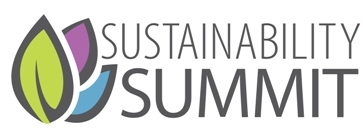COVID-19 has made green building more relevant than ever before
It is no secret that South Africa is facing challenges in areas of providing reliable energy supply to households. Water security is an additional challenge and climatic changes are not helping to ease the pressure on poorly maintained South African water infrastructure.
Promoting a Green Building approach in construction in general and a special focus in housing will assist South Africa in achieving its millennium goals in three main areas of environmental, social and economic aspects.
Environmental
From an environmental point of view, green buildings have the potential to reduce greenhouse gas emissions compared to other major emitting sectors (UNEP, 2009).
Green buildings achieving the Green Star certification in South Africa have been shown to save on average between 30-40% energy and carbon emissions every year, and between 20-30% potable water every year, when compared to the industry norm (WGBC, 2021).
Economic
Green buildings offer a number of economic or financial benefits. These include cost savings on utility bills for households (through energy and water efficiency), lower construction costs and higher property value and increased occupancy rates. Further information regarding the economic case for green buildings can be accessed in the World Green Building Council’s publication titled “The Business Case for Green Building” (WGBC, 2021).
With the growing awareness of consumers and the increasing demand for the efficiency and resilience of the building designs, it is reported that the overall asset value of green buildings shows a 7% increase in asset value compared to traditional buildings. (WGBC, 2021).
Social
With the reality of the COVID-19 pandemic sinking in, more people are working from home. People are realising the importance of a well-balanced energy-efficient home and the impact it has on mental wellbeing, as we are forced to work and live in our homes or, in case of lockdowns, to spend extended periods of time indoors.
In South Africa, the high cost and unreliable supply of energy and water combined with the COVID-19 lockdown has resulted in households becoming more aware of the advantages of a green building design.
Discussion
COVID-19 has brought an opportunity to bring the issue of green building design to the forefront and an opportunity to build spaces that are healthier, happier and more economical.
To promote and encourage developers and consumers alike, the government should develop schemes in which green-rated developments receive support and encouragement.
For example, NHBRC may offer discounted enrolment fees for Green Star rated buildings, or municipalities may offer reduced municipal rates for buildings that comply with the Green Star rating requirements in addition to the requirements of SANS 10400.
This approach requires an integrated planning and multi-faceted stakeholder engagement and collaboration among the public and private sectors.
As part of this new approach the following may be considered and developed further by the role players in private and public:
- The current model implemented by government and financing institutes considers only the initial capital investment of the house. To implement a green approach, the overall life cycle assessment of the building should be considered.
- The issue of implementation of green and energy efficiency in housing needs to be viewed and analysed through the life-cycle of the house.
- Government has to consider the macro-economic impact of green building and take into account the challenges that we are facing with shortages of power and water supply, which in turn provide additional motivation for a stronger drive towards green building design in South Africa.
- In South Africa residential consumption of electricity accounts for 19% of the consumption as per a 2019 report (statistica, 2019). It is most certain that with COVID-19 lockdowns, more people are working from home and hence this percentage will be higher. Now, entertain the idea that if 80% of the households in South Africa installed solar geysers or improved domestic insulation, they would reduce their energy consumption by 50% or more.
- What would be the impact on the strained power supply infrastructure? We are not going to discuss this today, but I leave it to readers to think about it.
Paimaan Byron, Pr. Eng.
SAICE Structural Division Chair
References
statistica. (2019). Distribution of electricity consumption in South Africa as of 2019, by sector. Retrieved from https://www.statista.com/statistics/1221769/electricity-consumption-in-south-africa-by-sector/
UNEP. (2009). Buildings and climate change: Summary for decision makers. UNEP.
WGBC. (2013). The Business Case for Green Buildings. WGBC.
WGBC. (2021). World Green Building Council. Retrieved from https://www.worldgbc.org/benefits-green-buildings

